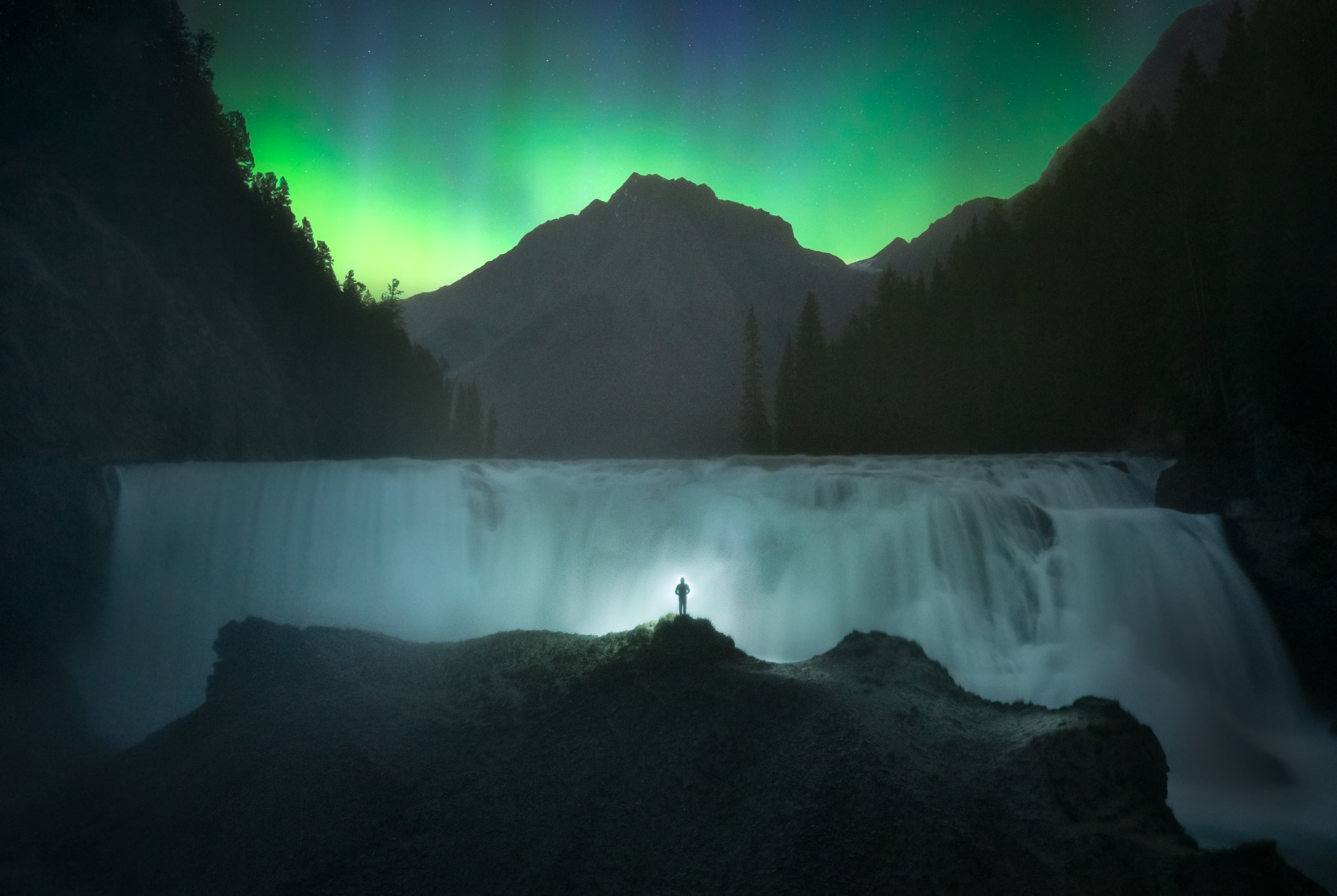“The universe is telling you you’re not here for a very long time,” answers Paul Zizka when I queried why he places himself in many of his night landscape shots. He enjoys doing this to communicate the connection of mankind to the landscape on which we live. Some of his nightscapes look like they were taken on a different planet altogether, a testimony to the diverse Earth we inhabit but have yet to explore in detail.
You can view this article and much more with minimal ads in our brand new app for iOS, iPadOS, and Android.
It takes incredible patience to get the kind of images Paul Zizka is famous for. But it also takes a lot of determination and persistence to capture unique photos from popular locations. Seeing the vantage points that some of these photos are taken from, it also needs a lot of physical and mental strength. Many of these images reminded me of some otherworldly scenes from the movie Prometheus, except that mainly was CGI. These images are 100% real, and equally stunning.
The Essential Photo Gear Used by Paul Zizka

Paul told us:
- Canon EOS R5
- Canon 16-35mm f2.8L
- Manfrotto tripods
- Lowepro PhotoSport PRO
- Lupine Blika headlamp
- LumeCube
- AquaTech EDGE sport housing
An extensive list can be seen at https://www.zizka.ca/gear
My creative vision often involves difficult situations, whether it be mountaineering expeditions in extreme conditions or working in the dark to capture celestial events or the northern lights. Having the right gear is essential to executing my vision.
The Phoblographer: Hi Paul. Please tell us about yourself and how you got into photography.
Paul Zizka: I am a professional mountain landscape and adventure photographer based in the town of Banff, Alberta and hailing from Quebec City. I am passionate about capturing the spirit of adventure in hard-to-reach mountain landscapes. When I first got into photography, it was a way for me to share my early mountain experiences with friends and family back east. I quickly grew fascinated with the interplay between light, weather, and landscape. I purchased my first DSLR in 2007 and learned everything I could about photography on my own. Three years later, I dove into photography full-time.

The Phoblographer: When did you start having a fascination with night photography? What was the catalyst that drove you?
Paul Zizka: I’ve always enjoyed how the nighttime can turn familiar places into completely different experiences. I also love all the elements of magic associated with astrophotography – aurora, stars, moonlight. The beauty that the camera reveals, but the naked eye cannot see, intrigues me. My fascination for astrophotography developed naturally as I did more overnight trips in the backcountry.

The Phoblographer: Astro and night sky photography have been around for a few years. What did you decide to do in this genre in order to clearly set yourself apart from other photographers?
Paul Zizka: I think committing has helped set me apart since it takes a lot of cold, late nights and persistence to create a body of work in this genre. Another thing was deciding to put myself in the images for scale, perspective, and story. It was a way of communicating our connection to the landscape. It is easier to use models, but I am often shooting alone, so it had to be me. Eventually, the self-portrait aspect became a part of the photographic journey, and I enjoy the challenges it brings.
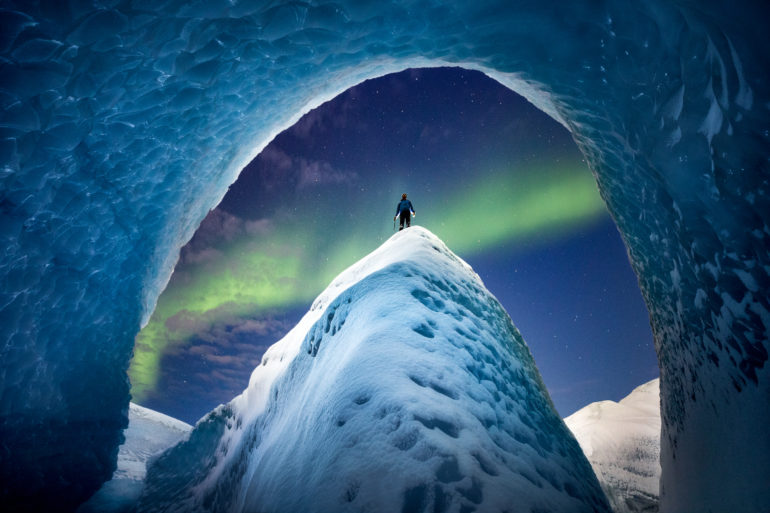
The Phoblographer: When you head out for night photography, what are some things you don’t leave home without? And what’s your favourite photography accessory for this?
Paul Zizka: The non-camera gear I bring is all about keeping me warm and comfortable, so I can stay out and shoot for as long as I need to. This includes a puffy jacket, hand warmers, warm footwear, and a hot drink. Traditional hand warmers work, but I do love my G-Tech Heated Hand Warmers.

The Phoblographer: There’s of course the fitness aspect to all of this. In between all the hiking, photography, workshops, editing, etc., how do you find time for keeping yourself in good shape?
Paul Zizka: It’s been non-stop for about a decade. I get outside on a weekly basis and often edit at night after the kids are in bed. Unless there’s a celestial event happening, that is! In normal years, I go on multiple expeditions a year. It’s constantly getting out that keeps me in shape for what I do, and being in shape is so important when it comes to reaching the places I want to reach for my photography.
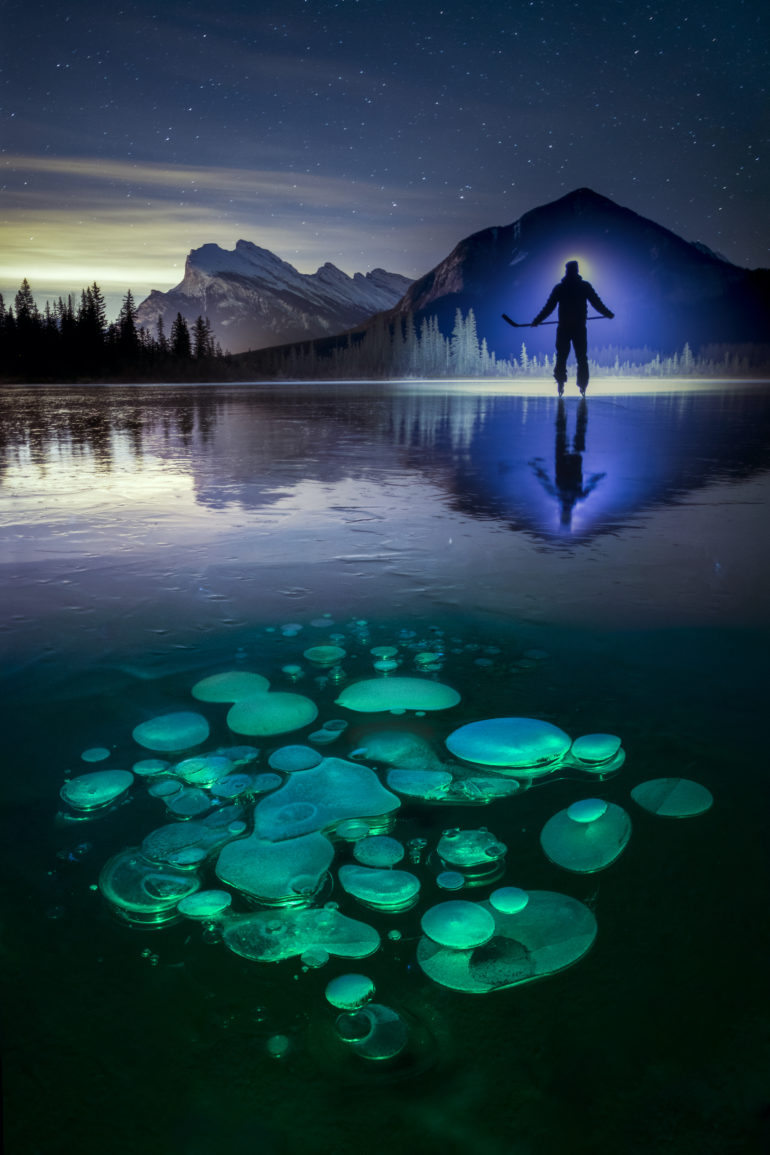
The Phoblographer: How much planning typically goes into finding and accessing a new location? Do you spend a lot of time away from family to do this?
Paul Zizka: There’s a fair bit of planning that goes into reaching new locations, but that challenge is half the fun. The nature of my work takes me away from my family, especially now that I have young girls. It often feels like a juggling act, but I have struck a balance between work and family. With the pandemic, I’ve also spent extra time with my family and made to most of it. We’ve also done some trips as a family where I can do some photography, like local backcountry trips and a recent family trip to Costa Rica (although the photography came second to family time on that one).

The Phoblographer: Has there ever been an incident when you’ve reached a much anticipated summit or a spot and then looked and the view and went, “Bummer.”
Paul Zizka: Plenty of times. It’s easy to be disappointed if the only purpose is reaching the summit, so I don’t tend to look at trips that way. A recent trip that comes to mind was submitting Howse Peak this summer. There was so much wildfire smoke that we could barely make out Mount Chephren, the next peak over. I didn’t come away with many photos, but there was so much else to enjoy about the experience. The lack of views also created an opportunity to observe and appreciate things up close—the rocks, glaciers, and lichen—in a different way.
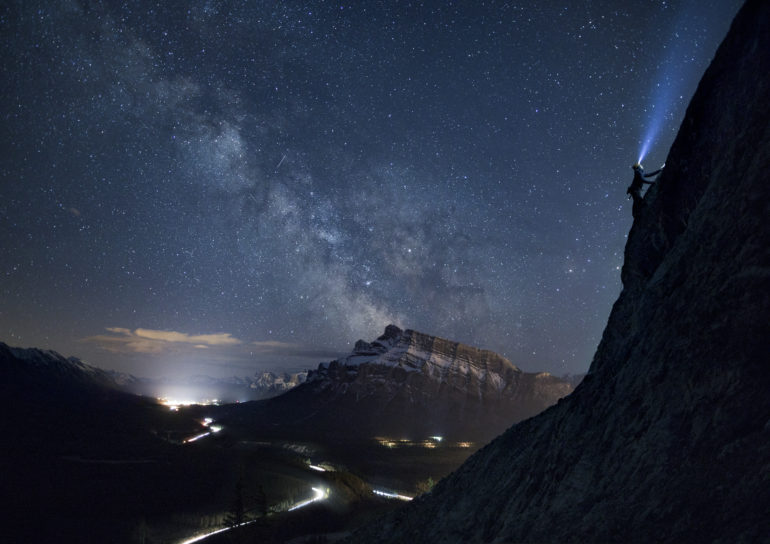
The Phoblographer: I saw that you just got into the world of NFTs. A lot of NFT sales are going to animations and cartoon GIFs. Do you think photographers have a long term future in this?
Paul Zizka: I’m not an expert on NFTs, it’s all been a big learning process, actually, but I do think it’s exciting to see photographers explore this space. I think some styles of photography are a natural fit in the world of NFTs, at least right now, and I’m curious to see how things develop.

The Phoblographer: Is there really a perfect (digital) camera today that can deal with the issues of low light and long exposure noise? What’s the best way to mitigate this to get a clean shot at night?
Paul Zizka: I’m really impressed with what the R5 is capable of, and I’m confident that the technology is only going to keep getting better. For me, it’s impossible to get a clean shot without being confident working your camera in the dark. I also rely on a system for composing an image and choosing settings; it’s a familiar routine that I’ve worked out over the years and helps me mitigate issues like noise.

The Phoblographer: Tell us how you felt when you witnessed the Northern Lights for the first time. Was there a desire to just put the camera aside and take the spectacle in completely?
Paul Zizka: There’s something primal about seeing the northern lights, whether it’s your first time or hundredth. My first instinct is to shoot it, but now that I’ve been doing it for a while, there’s less figuring out involved. That makes it easier to step back and enjoy the show with my own eyes.
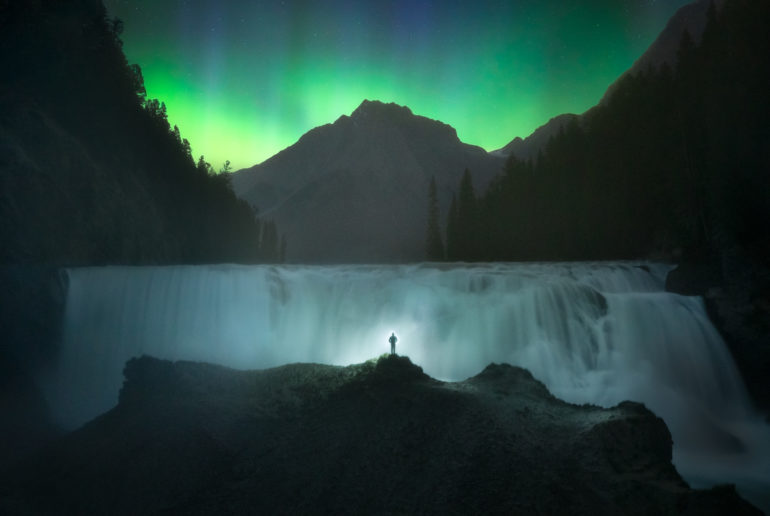
The Phoblographer: In a lot of your wider landscape shots, you place yourself in the frame too. Is this a hint that humans are insignificant in the grander scheme of the universe?
Paul Zizka: That’s precisely how I feel in vast landscapes and exactly what I try to convey in these images. Being out there, looking at ancient stars that are light-years away, really puts my own life and issues into perspective. The landscape and celestial wonders I capture were there long before I was on Earth and will continue to be there long after I’m gone. Rather than feeling totally insignificant, it seems to me like the universe is telling you you’re not here for a very long time, so there’s no use worrying about anything. Explore, create, and make meaningful connections with the time you have instead.
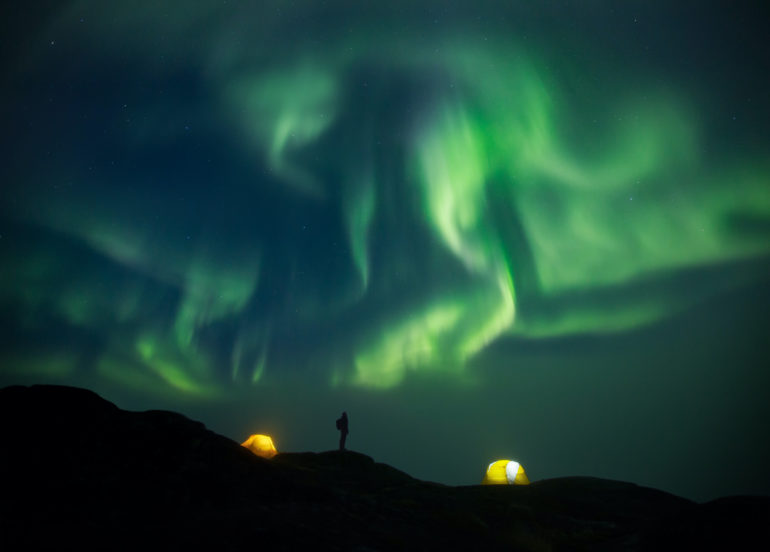
The Phoblographer: We’re seeing an uptick in incidents where photographers wind up in outdoor locations they shouldn’t be and, in a lot of cases, end up damaging or destroying the place altogether. How do we as a community tackle such issues?
Paul Zizka: In the backcountry, we have a “leave no trace” policy in which it’s our responsibility to leave the landscape just as we saw it, with no trace that we were ever there. I think that it’s our responsibility to tread lightly and respectfully wherever our photography takes us. As a community, it’s important to talk about these things and encourage these practices so that generations to come can be inspired by the places that inspire us now.

All images by Paul Zizka (unless specified otherwise). Used with permission. Please visit his website and Twitter, Facebook and Instagram pages to see more of his work.
Want to get your work featured? Here’s how to do it!


